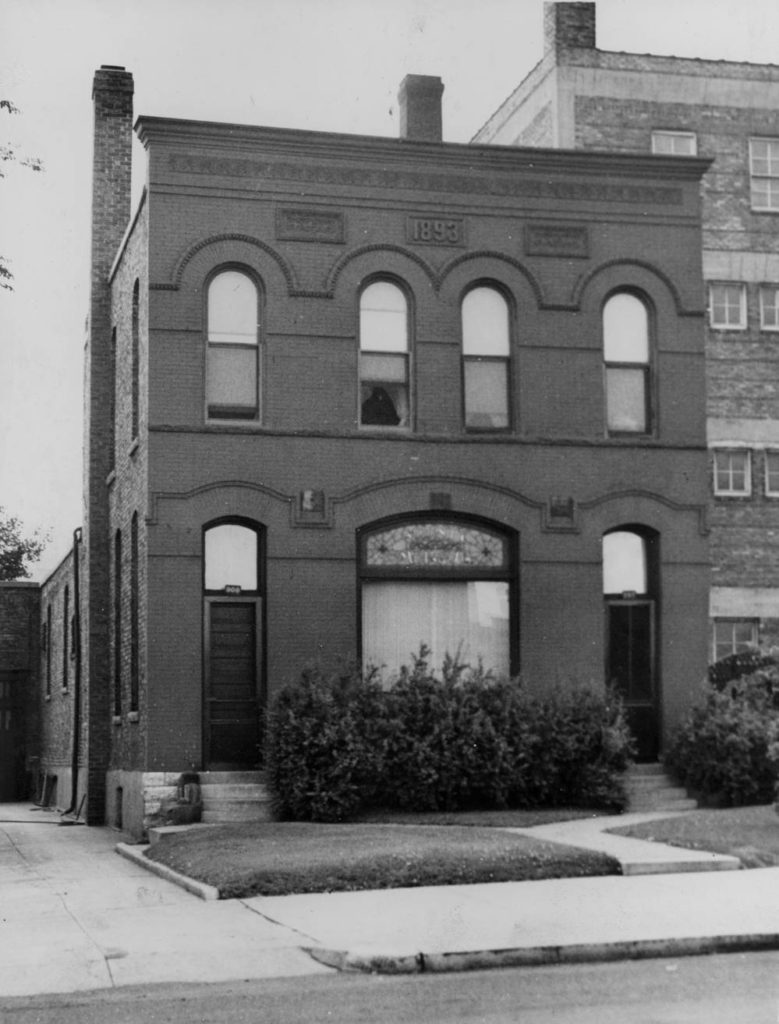Tales from Pioneers and Soldiers Memorial CemeteryÂ
By SUE HUNTER WEIRÂ
180th in a Series
A Book of Sorrows
The title seems fitting for a book of poetry or maybe a novel, but its purpose was as far from those uses as possible. It was a ledger measuring 18” by 12” with a black cloth binding, trimmed with red Moroccan leather. It was the property of the County Morgue and contained the names of the people whose bodies were stored in “Death”™s Lodging House” as one reporter put it, for some brief period of time.
The first entry in this particular book, (although there were undoubtedly records of earlier deaths kept elsewhere,) was made on August 5, 1893, the same day that the new morgue opened for business. John F. Walsh, the city”™s morgue keeper, most likely purchased a new ledger in honor of the occasion. Over the next 22 years almost 4,000 names- only one line allotted for each person- were recorded in the book.
Six of the 26 names entered on the first page in the ledger are men who are buried in Pioneers and Soldiers Cemetery between early August and early November 1893. An article published in the Star Tribune on April 25, 1915, described the ledger as “devoting its pages to suicide, murder, accident and misfortune.” In other words, theirs were not easy or straightforward deaths.
Philander Prescott Pettijohn”™s name was the sixth entry in the ledger. He was killed when he was struck by a train. There was some question about whether his death was an accident or suicide, but the official cause of death was finally recorded as “railroad accident.” Pettijohn was the grandson of one of Minnesota”™s most prominent families during its territorial days. His grandfather, Philander Prescott, arrived at Fort Snelling in 1819 and worked as a trapper, trader and government agent. His grandmother, Naginowenah (Mary Prescott), was the niece of Mahpiya Wicasta (Cloud Man), the tribal elder at the Bde-Maka-Ska encampment. His mother, Lucy Prescott, was Prescott”™s oldest daughter, and his father, Eli Pettijohn, was a well-known miller and missionary. Philander Pettijohn was buried next to his grandparents and other family members.
On October 1, 1893, a young man named Nicholas Ward (Seneca James West in the cemetery”™s records) was killed while operating the freight elevator at the West Hotel. He accidentally fell into the shaft and fell six stories to his death. He was 19 years old.
Magnus Anderson was taken to the morgue because the coroner said that he had reason to suspect suicide although why he thought so wasn”™t made clear. The official cause of death eventually was determined to be uremia. Mr. Anderson was 28 years old.
Charles Peterson was a carpenter but had been out of work for two weeks before he shot himself. The other men in his lodging house noticed that he had been uncharacteristically quiet for a few days before he died but other than that didn”™t think anything unusual about his behavior. Peterson had been in the country for about two years, long enough to have become a member of the Flour City Lodge, No. 118. He left the receipt for his paid-up membership dues in plain view so that members of the lodge could be notified about his death and make arrangements for his funeral and burial. They did.
Vincent Tyler was a Civil War veteran whose marriage to a much younger woman was falling apart. He wanted to move to Iowa to farm; she wanted to stay in Minneapolis where she had a job sewing costumes for opera companies and theatrical performances. When he couldn”™t persuade her to leave, he shot her. Fortunately, her wound was not fatal. He then shot and killed himself. His body remained at the morgue until the Grand Army of the Republic received proof that Tyler was a veteran and arranged his burial in the Grand Army plot.
John Nelson died from typhoid fever in St. Mary”™s Hospital on November 1, 1893. Most likely the coroner was simply trying to locate his family.
If the stories of those named in the Book of Sorrows were grim, there was occasionally cause for celebration on the morgue”™s second floor where John Walsh and his family lived. In September 1893, only a month after the new building opened, Mary Ann Walsh, John”™s wife, gave birth to their first daughter, Mary Irene. In December 1896, she gave birth to another, their second daughter, Frances. John Walsh served as county morgue keeper for eight years. He died in 1932 at the age of 73, and was buried in St. Mary”™s Cemetery.Â

Business offices and storage on the ground floor level. Family apartment located upstairs.Â
Photo credit: Hennepin County Library









